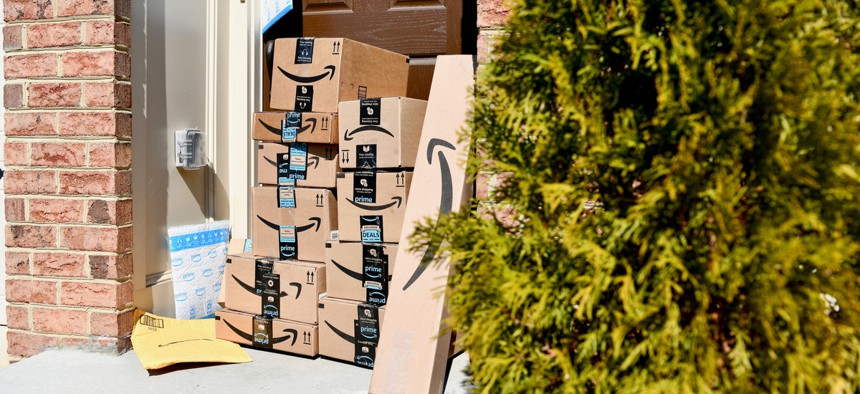Record Cyber Monday Boosts State Tax Revenue

Americans spent a record $9.4 billion on Cyber Monday, the annual post-Thanksgiving online shopping day. Shutterstock
Cyber Monday sales this year were up nearly 20% compared to last year.
This article originally appeared on Stateline.
Americans spent a record $9.4 billion on Cyber Monday, the annual post-Thanksgiving online shopping day. That figure is nearly 20% more than last year’s roughly $7.9 billion, providing a big boost to states’ online sales tax collections in the first year that the collections are in place in nearly all states with sales taxes.
Adobe Analytics, which tracks online spending, said Cyber Monday sales were higher than online sales on Black Friday ($7.4 billion) this year. Last year at this time, many big states, including New York, California and Texas, missed out on online sales tax collections because they had not geared up their sales tax systems to take advantage of the U.S. Supreme Court decision in South Dakota v. Wayfair Inc. The court ruled in June 2018 that online sellers with either 200 transactions or $100,000 in sales annually had to collect and remit sales taxes to the states.
Forty-three of the 45 states with sales taxes now require remote sellers to collect and remit sales taxes; only Florida and Missouri have yet to adopt a post-Wayfair sales tax regime, according to the Tax Foundation, a conservative-leaning think tank that tracks taxes.
But analysts caution that state coffers may not get a gigantic boost, because many major online retailers such as Amazon had been collecting and remitting sales taxes for a couple of years even before the Supreme Court ruling.
“Many states underestimated just how much of the online market they were already capturing, leading to missed revenue targets for their remote sales tax systems,” said Jared Walczak, director of state tax policy at the Tax Foundation. But many states are exceeding or meeting expectations, he said.
The most significant impact of the high court ruling was on marketplace “facilitators” — platforms such as Amazon Marketplace, eBay or Etsy — which are linked to the bigger online companies but many of which were not collecting sales taxes as the larger companies were.
“Imposing the obligation on those facilitating the transaction allows states to reach sales that are otherwise difficult, if not impossible, to capture,” Walczak said.
Even before this year’s big Cyber Monday buying spree, state sales taxes were already growing in most states in fiscal 2019, which ended in September, according to the National Association of State Budget Officers. NASBO said that many states attributed part of the growth to expanded online sales tax collections, and that 32 states were collecting more than they anticipated.
For example, NASBO reported, Pennsylvania’s fiscal 2019 revenue, $34.9 billion, was about $883 million, or 3%, above projections. Much of the increased growth came from increased sales tax collections, partly online transactions, the organization said.
Shoppers are becoming more comfortable not only with shopping online, but also with shopping on smartphones, Adobe reported. The company predicted that shopping by smartphone will account for nearly half — 47% — of overall retail holiday shopping growth.
For online shopping, the percentage was even higher. “About $3 out of the $4 added to this holiday’s ecommerce spending will come from smartphones,” the company said.
A relatively new method of shopping — buy online, pick up in store — also is gaining in popularity, with 39% more of these types of orders placed already in 2019, prior to the holiday shopping season, compared to the same time in 2018, the firm reported.
Charitable giving online also was ticking up, according to Adobe’s survey of 1,000 U.S. consumers, with a preference for religious, health, disaster relief and educational organizations.
Last-minute panic shopping is alive and well. During the peak hour of shopping between 11 p.m. EST and midnight late Monday, consumers spent $12 million a minute on average, Adobe said.
“Cyber Monday sales surged late last night as consumers established new records both in overall purchases and purchases made via smartphones,” said Adobe’s Taylor Schreiner, a principal analyst. “The coming days will reveal if retailers will extend their holiday sales more than years past due to the shortest possible remaining shopping season till Christmas.”
Elaine S. Povich is a staff writer for Stateline.
NEXT STORY: Taxing Online Sales Won’t Save Cities From the Retail Apocalypse





